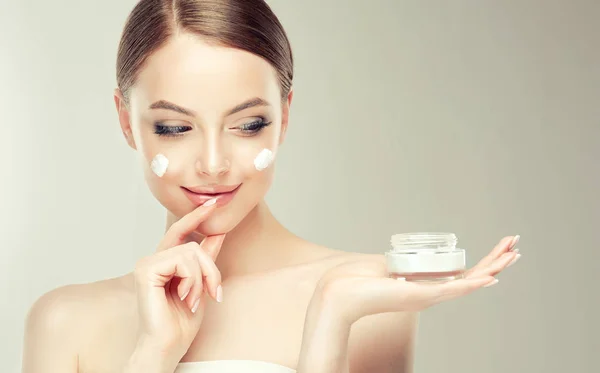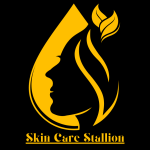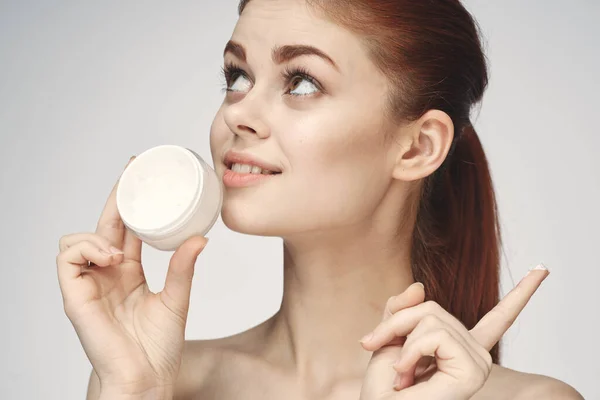What Is Urea In Skincare: Urea is a powerful humectant and exfoliant that helps to hydrate the skin by attracting and retaining moisture, while also promoting the shedding of dead skin cells to improve texture and overall skin health.
What Is Urea In Skincare: Unveiling the Skincare Secret You Didn’t Know You Needed! Imagine a single ingredient that not only hydrates your skin but also gently exfoliates it, leaving you with a smoother, more radiant complexion.
Urea, often overshadowed by more famous skincare ingredients, is a hidden gem that dermatologists and beauty experts swear by. This multifaceted compound, naturally found in our skin, offers an array of benefits that cater to even the most stubborn skin issues. Dive into the world of urea and discover why it’s becoming the new must-have in your skincare arsenal.

What Is Urea In Skincare
Urea in skincare is a compound known for its excellent moisturizing and exfoliating properties. It’s a naturally occurring substance in the skin’s outer layer and plays a vital role in maintaining skin hydration. Urea can be found in various concentrations in skincare products, with higher levels used for more intensive treatments. It helps to break down dead skin cells, making it effective for conditions like eczema, psoriasis, and dry skin. Urea is also known for its ability to enhance the absorption of other skincare ingredients.
The Benefits of Urea in Skincare
Urea, often referred to as a humectant, is pivotal in the skincare world due to its ability to attract and retain moisture. This compound is part of the skin’s natural moisturizing factor (NMF), which helps to keep the skin hydrated, smooth, and supple.
By drawing water into the skin’s cells, urea ensures that the skin remains plump and well-moisturized. Its keratolytic properties mean it can gently exfoliate the skin by dissolving the intercellular matrix, which holds dead skin cells together.
This process not only smoothens the skin but also allows for better penetration of other active ingredients, making your skincare routine more effective. Commonly found in products designed for dry and rough skin, urea is praised for its dual action of moisturizing and exfoliating.
How Urea Works in Skincare Products
Urea works by penetrating the skin’s outer layer, where it helps to increase moisture content. It breaks down the protein structure of dead skin cells, facilitating their removal and leaving the skin smoother and softer. This process, known as keratolysis, is beneficial for treating thick, rough skin conditions.
In higher concentrations, urea can also act as a local anesthetic, providing relief from itching and irritation associated with skin conditions such as eczema and psoriasis. Additionally, urea enhances the permeability of the skin barrier, making it an excellent carrier for other active ingredients in skincare formulations.
Types of Skincare Products Containing Urea
Urea can be found in a variety of skincare products, ranging from moisturizers and creams to exfoliating lotions and foot care products. In lower concentrations (2-10%), urea is primarily used for its hydrating properties, making it ideal for daily moisturizers.
Products with higher urea concentrations (20-40%) are designed for more intensive treatments, targeting conditions like calluses, keratosis pilaris, and severely dry skin.
These formulations provide deep hydration while also helping to reduce the thickness of hyperkeratotic skin. Urea-based products are often recommended by dermatologists for their effectiveness and gentle action on the skin.
The Science Behind Urea’s Efficacy
The efficacy of urea in skincare is backed by its biochemical properties and interaction with the skin. Urea is a part of the skin’s natural moisturizing factors (NMF), which are critical in maintaining the skin’s barrier function and hydration.
As a humectant, urea attracts water from the deeper layers of the skin and the environment into the stratum corneum (the outermost layer of the skin). Its ability to alter the skin’s structure at a molecular level makes it a unique and powerful ingredient in addressing various dermatological conditions.
Studies have shown that urea can significantly improve skin texture and hydration levels, making it a staple ingredient in both over-the-counter and prescription skincare products.
Understanding Urea
Types of Urea
Natural Urea (Produced by the Body)
Natural urea is a vital compound produced by the human body. It plays a crucial role in the urea cycle, where the liver converts ammonia, a toxic byproduct of protein metabolism, into urea. This non-toxic urea is then excreted through urine, helping to maintain the body’s nitrogen balance. Natural urea is essential for removing excess nitrogen and preventing the buildup of harmful substances in the bloodstream.
Synthetic Urea (Produced for Cosmetic Use)
Synthetic urea is widely used in the cosmetic industry for its hydrating properties. Created in laboratories, it mimics the natural urea found in the body. This synthetic version is a key ingredient in many skincare products due to its ability to attract and retain moisture. It helps to soften and smooth the skin, making it a popular choice for moisturizers, lotions, and creams. Synthetic urea is also beneficial for treating dry and rough skin conditions like eczema and psoriasis.
Chemical Properties
Hygroscopic Nature
Urea is hygroscopic, meaning it readily absorbs moisture from the environment. This characteristic makes it an effective humectant in skincare products, helping to keep the skin hydrated by drawing water into the outer layers. The hygroscopic nature of urea also plays a role in its application as a fertilizer, where it helps soil retain moisture, enhancing plant growth.
Solubility and Stability
Urea is highly soluble in water, which contributes to its versatility in various applications. Its solubility allows it to be easily incorporated into aqueous solutions, making it ideal for use in liquid fertilizers and topical skincare products. Urea is also stable under normal conditions, ensuring its efficacy over time. This stability makes it a reliable component in both agricultural and cosmetic formulations.
In summary, understanding urea involves recognizing its types and chemical properties. Natural urea is essential for bodily functions, while synthetic urea serves as a beneficial ingredient in cosmetics. Its hygroscopic nature and solubility enhance its effectiveness in various applications, from skincare to agriculture.
Benefits of Urea in Skincare
Hydration and Moisturization
Role as a Humectant Urea is a powerful humectant in skincare, drawing moisture from the environment into the skin. This hydration keeps the skin soft and supple. People often describe urea-based products as deeply moisturizing and hydrating.
Mechanism of Moisture Retention Urea helps the skin retain moisture by enhancing its water-binding capacity. This mechanism prevents dryness and flakiness. Users frequently note the long-lasting hydration and smooth texture urea provides.
Exfoliation
Keratolytic Properties Urea has keratolytic properties, meaning it helps break down dead skin cells. This exfoliation process reveals fresher, smoother skin. Consumers appreciate its ability to improve skin texture without harsh abrasives.
Gentle Exfoliation Without Irritation Urea gently exfoliates without causing irritation, making it suitable for sensitive skin. It’s often recommended for those seeking mild yet effective exfoliation. Reviews highlight its effectiveness in sloughing off dead skin while maintaining skin comfort.
Skin Barrier Repair
Enhancing Skin Barrier Function Urea enhances the skin barrier function, strengthening the protective layer of the skin. This improvement helps protect against environmental stressors. People often comment on their skin feeling more resilient and healthy.
Reducing Trans-Epidermal Water Loss (TEWL) By reducing trans-epidermal water loss (TEWL), urea helps maintain optimal skin hydration. This reduction in TEWL is crucial for preventing dehydration and keeping the skin plump. Users notice a significant decrease in skin dryness and an increase in moisture retention.
Treatment of Skin Conditions
Eczema and Dermatitis Urea is effective in treating eczema and dermatitis, providing relief from itching and dryness. It helps soothe and heal inflamed skin. Many users report improved comfort and reduced symptoms with regular use.
Psoriasis For psoriasis sufferers, urea softens thick, scaly patches, making them easier to manage. Its keratolytic action helps reduce the buildup of dead skin. Patients frequently mention a noticeable improvement in the appearance and feel of their skin.
Ichthyosis Urea is beneficial for ichthyosis, a condition characterized by dry, scaly skin. It helps hydrate and soften the rough skin. Users with ichthyosis often describe urea products as life-changing for their skin care routine.
Dry and Rough Skin Urea is a go-to solution for dry and rough skin, providing intense moisturization and smoothness. It transforms dry patches into soft, hydrated skin. Reviews often highlight its effectiveness in maintaining soft and healthy skin.
Urea in Skincare Products
. Concentration Levels and Their Effects
1. Low concentration (2-10%)
Low concentration urea, typically between 2-10%, is excellent for daily moisturizing. It helps maintain hydration and softens the skin. Commonly found in everyday creams and lotions, this level gently exfoliates and enhances skin barrier function without irritation. It’s ideal for sensitive skin, providing soothing relief and reducing roughness.
2. Medium concentration (10-30%)
Urea at medium concentrations, from 10-30%, offers more intense exfoliation and hydration. It effectively treats conditions like dry, flaky skin, and keratosis pilaris. This level can enhance the skin’s moisture retention and improve texture. Products with this concentration are often recommended for areas with thicker skin, such as elbows and knees, providing significant improvement in skin smoothness.
3. High concentration (over 30%)
High concentration urea, over 30%, is used for more severe skin conditions. It delivers potent exfoliating and hydrating benefits. This concentration level helps manage extremely dry, hardened, or callused skin. Often found in specialized treatments and ointments, high-concentration urea can drastically improve skin texture and flexibility but should be used under professional guidance to avoid potential irritation.
B. Common Product Forms
1. Creams and lotions
Urea-based creams and lotions are the most common forms. They are suitable for daily use and provide lasting hydration. These products often combine urea with other emollients and humectants, enhancing their moisturizing effect. They are popular for treating dry and sensitive skin and are easily absorbed without leaving a greasy residue.
2. Serums and gels
Urea serums and gels are designed for more targeted treatment. They penetrate deeper into the skin, delivering concentrated hydration and exfoliation. These formulations are lightweight and often used in skincare routines focusing on anti-aging and texture improvement. Serums and gels are particularly beneficial for combination to oily skin types.
3. Cleansers and body washes
Cleansers and body washes with urea gently exfoliate while cleansing the skin. They help maintain moisture balance and improve skin texture. Suitable for daily use, these products provide a mild exfoliating effect, leaving the skin smooth and refreshed. They are ideal for those looking to incorporate urea into their routine without additional steps.
C. Application and Usage Guidelines
1. Frequency of use
For low concentration products, daily use is generally recommended. Medium concentration products can be used several times a week, depending on skin tolerance. High concentration products should be used less frequently and under professional advice to avoid over-exfoliation and irritation.
2. Suitable skin types
Low concentration urea is suitable for all skin types, especially sensitive and dry skin. Medium concentration products are ideal for normal to dry and flaky skin, while high concentration urea is best for severely dry, callused, or thickened skin. Always conduct a patch test before full application, particularly for higher concentrations.
3. Combination with other skincare ingredients
Urea works well with other hydrating and soothing ingredients like hyaluronic acid, glycerin, and ceramides. It can also be combined with mild exfoliants like lactic acid for enhanced benefits. Avoid using urea with strong acids or retinoids simultaneously, as this can increase irritation. A balanced skincare routine ensures maximum benefits and minimal adverse effects.

